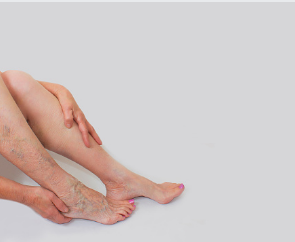Several treatment options are available if you’re suffering from a persistent problem with your varicose vein removal Adelaide. Laser treatment, Sclerotherapy, and phlebectomy are some of the options available. Fortunately, The Vein Institute Adelaide offers highly effective, safe, and minimally invasive varicose vein treatments. With these advanced options, you’ll experience less pain and a shorter recovery time after surgery.
Non-surgical treatment for varicose veins
If you’ve been avoiding surgery because of the embarrassment of having unsightly veins, you’ve probably heard about non-surgical treatment for varicose and spider vein treatments. This new procedure uses laser technology to eradicate the veins without any downtime. In addition, because it’s a walk-in procedure, many patients return to work the same day.
If left untreated, varicose veins can be dangerous. If you don’t seek medical attention, you could develop blood clots and risk developing DVT or Deep Vein Therapy. In addition to their aesthetics, varicose veins can cause discomfort and pain. The symptoms of varicose veins can vary in size and colour, but they’re typically lumpy or twisted.
Laser treatment
In recent years, there have been breakthroughs in treating varicose veins, such as laser treatments. The latest laser technology has revolutionised how varicose veins are treated, resulting in minimal recovery time and no surgery. In addition, unlike previous procedures, laser treatments are walk-in-walk-out procedures, meaning most patients can return to work the same day. And the benefits of this treatment don’t end there!
The cost of leg vein treatment varies according to the type of procedure. Micro Sclerotherapy, for example, may cost $450 per leg, depending on your insurance coverage. However, Medicare may rebate this cost up to $95 on selected legs. Ultrasound Guided Sclerosing, on the other hand, costs $950 per treatment. This price is inclusive of consultation fees, scanning, and follow-up. Usually, one treatment is needed for each leg.
Sclerotherapy
 Endovenous therapy is one of the most advanced options for removing varicose vein removal Adelaide. This minimally invasive treatment involves injecting a medical-grade irritant into the varicose vein. It causes inflammation and scarring of the vein. The treatment is done with the help of an ultrasound machine, which targets specific veins. Multiple injections are typically required under local anaesthesia. Recovery time is minimal, and the procedure is often repeated in a series of visits.
Endovenous therapy is one of the most advanced options for removing varicose vein removal Adelaide. This minimally invasive treatment involves injecting a medical-grade irritant into the varicose vein. It causes inflammation and scarring of the vein. The treatment is done with the help of an ultrasound machine, which targets specific veins. Multiple injections are typically required under local anaesthesia. Recovery time is minimal, and the procedure is often repeated in a series of visits.
Despite the numerous benefits of Sclerotherapy, it is not without risks. While there is a risk of bruising, it is rare and usually disappears within a few weeks. It is also important to remember that Sclerotherapy does not prevent the future development of spider veins. Therefore, it is recommended to undergo several treatments to achieve the best results. Several sessions of Sclerotherapy are required, and patients must wear compression stockings for two to six weeks. After treatment, taking a half-hour walk for several days is recommended to minimise pain or discomfort.
Phlebectomy
Phlebectomy is a standard treatment for large varicose vein removal Adelaide that requires a doctor’s assistance. This procedure involves making several small incisions near the varicose vein in question. During the procedure, the doctor will use a hook similar to a small crochet hook with a straight shaft to remove the vein. The procedure usually lasts 30 minutes to an hour and will require local anesthesia.
This surgical procedure is performed by experienced vascular surgeons specialising in this type of surgery. The doctors performing this procedure are Robert Fitridge, Professor of Vascular Surgery and Philip Coleridge Smith, Reader in Surgery. The procedure is often combined with other treatments, such as ablation. The outcome of this procedure is permanent because the infected vein is removed completely.
Endovenous catheter ablation
Endovenous catheter ablation is a minimally invasive procedure that uses a laser or radiofrequency energy to seal the abnormal vein. The procedure is successfully performed in a doctor’s office without surgery, and patients may wear loose clothing and a gown. Patients may experience discomfort after the procedure, but it should not be as severe as surgery. Listed below are the number of advantages of endovenous ablation and its risks.